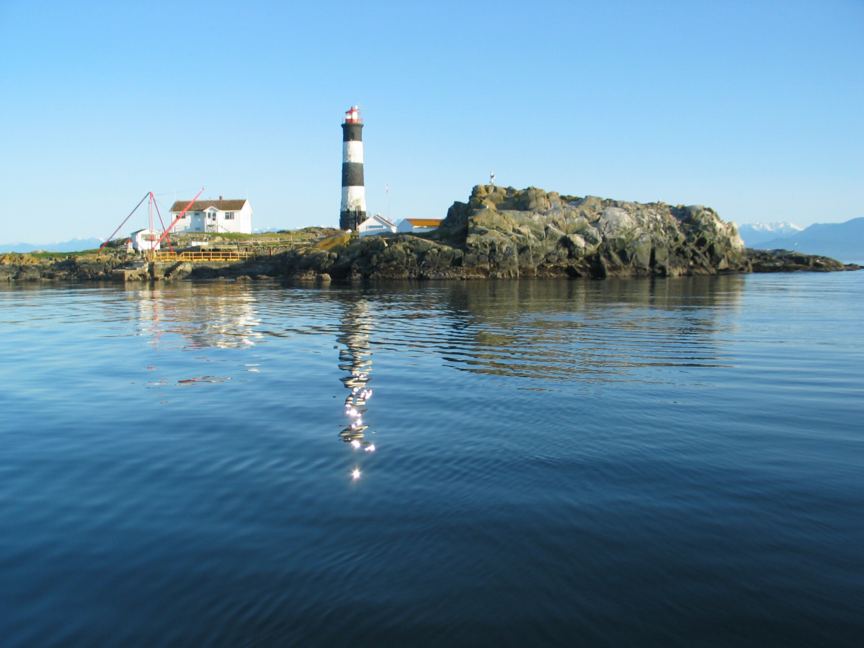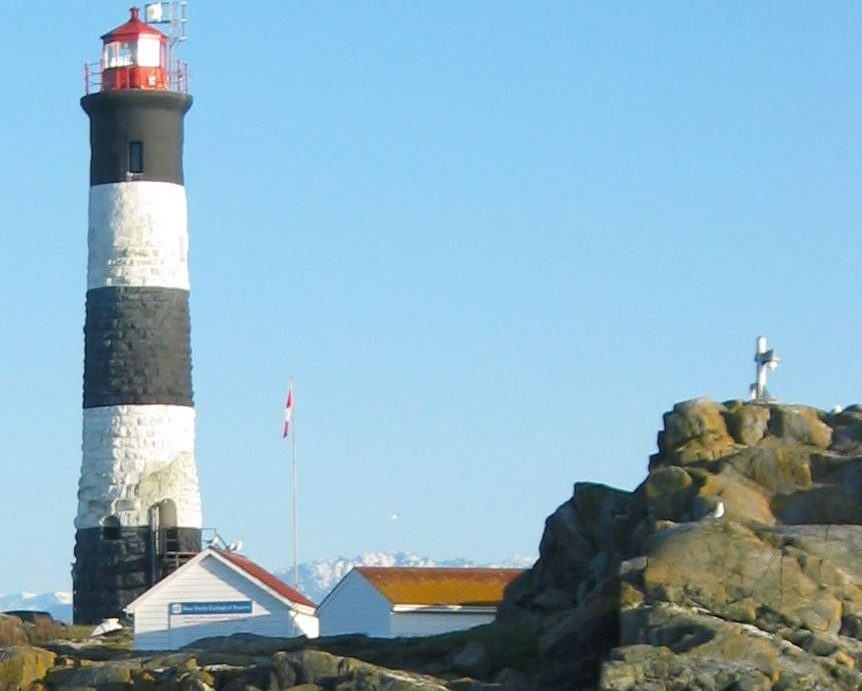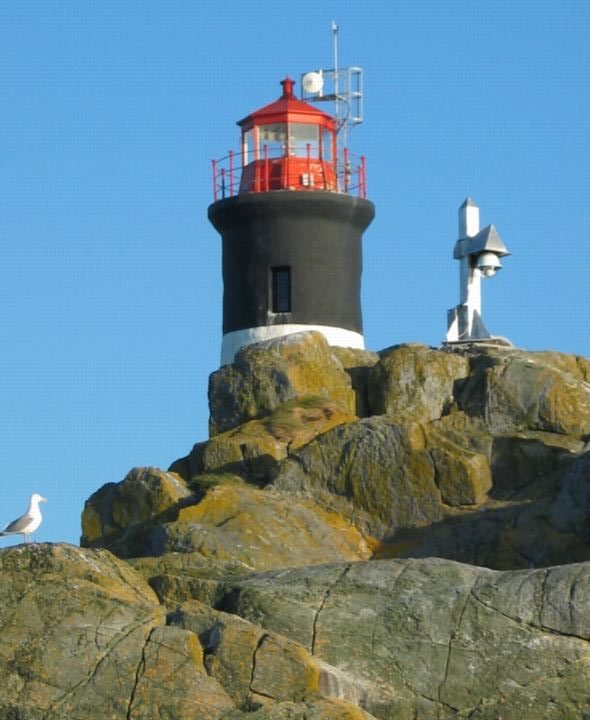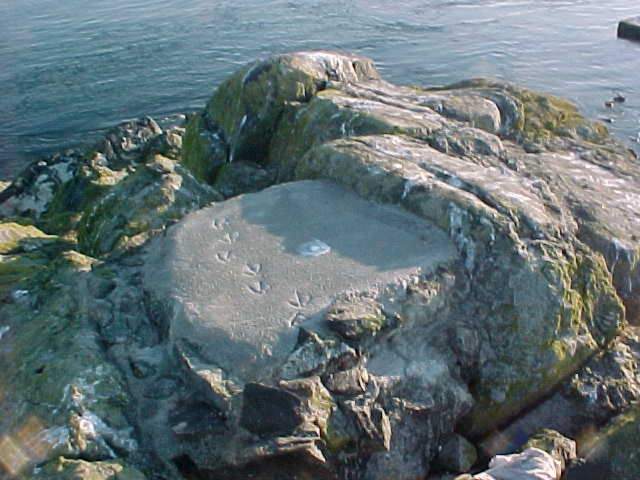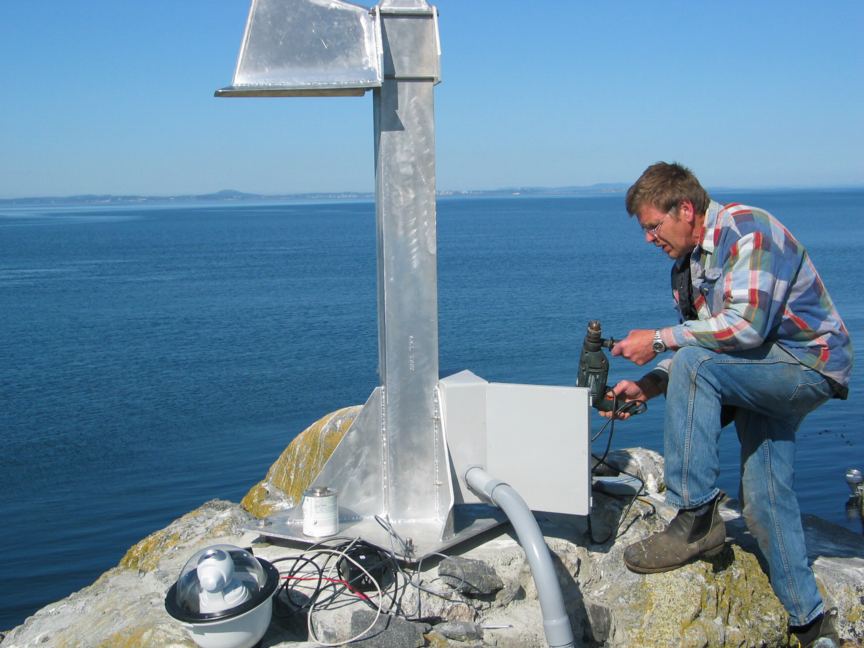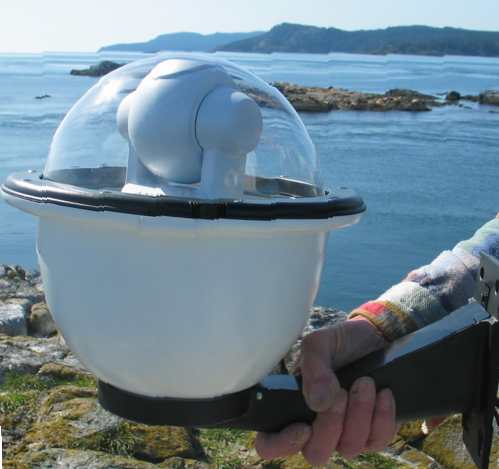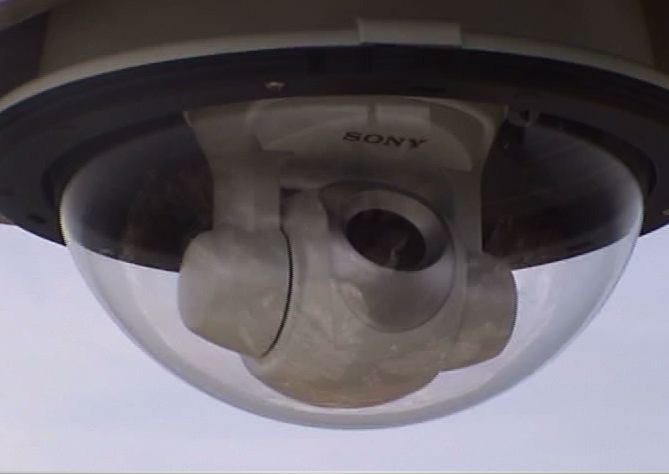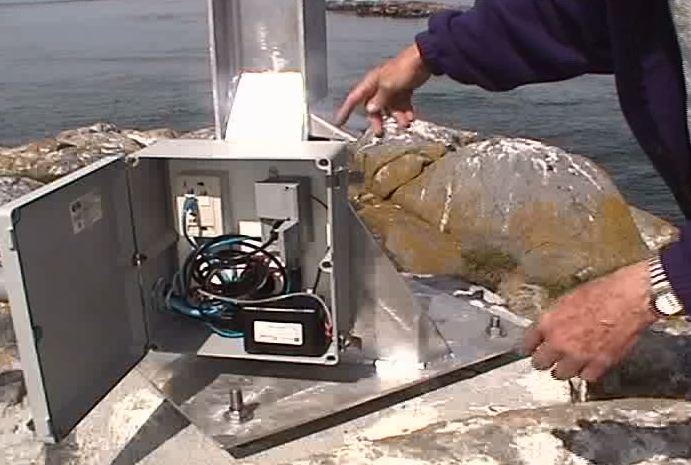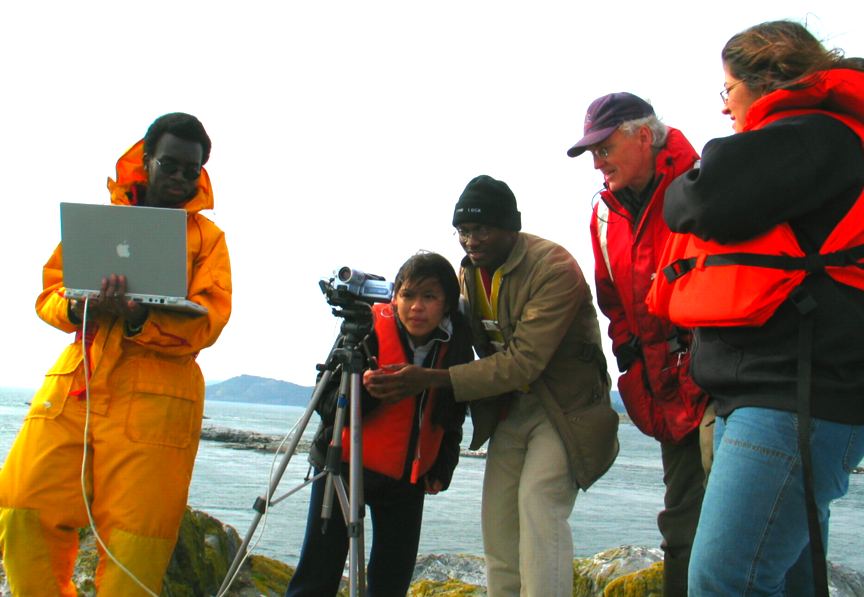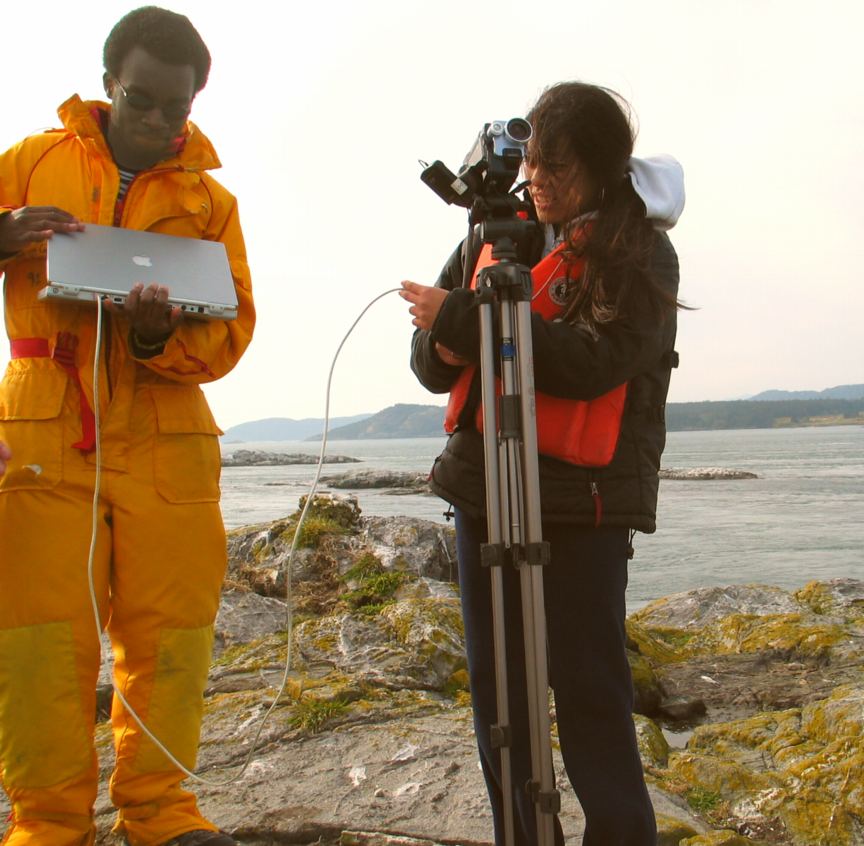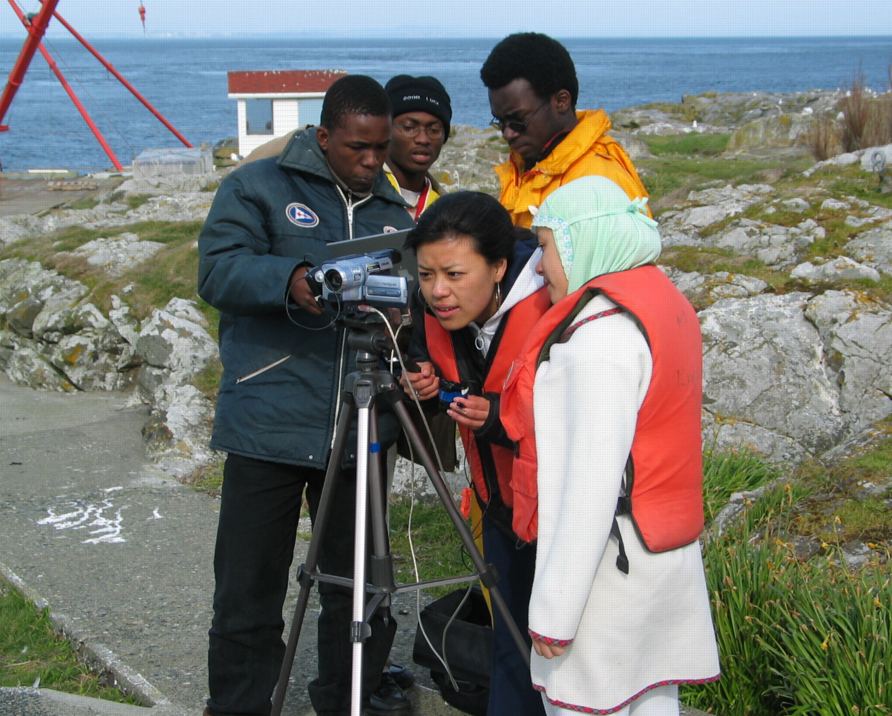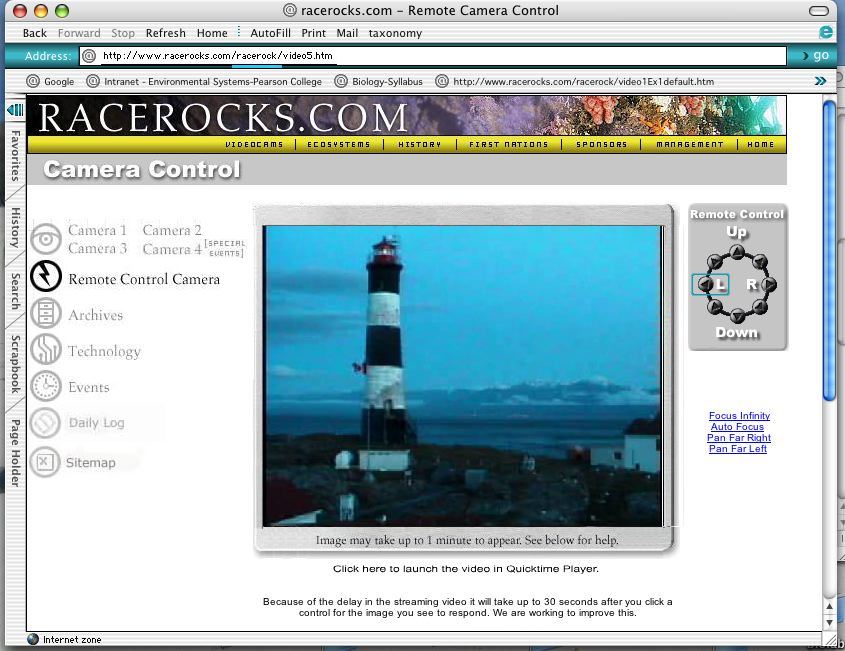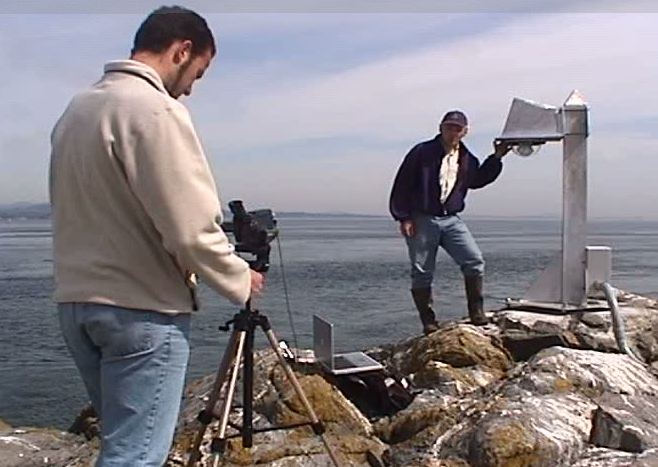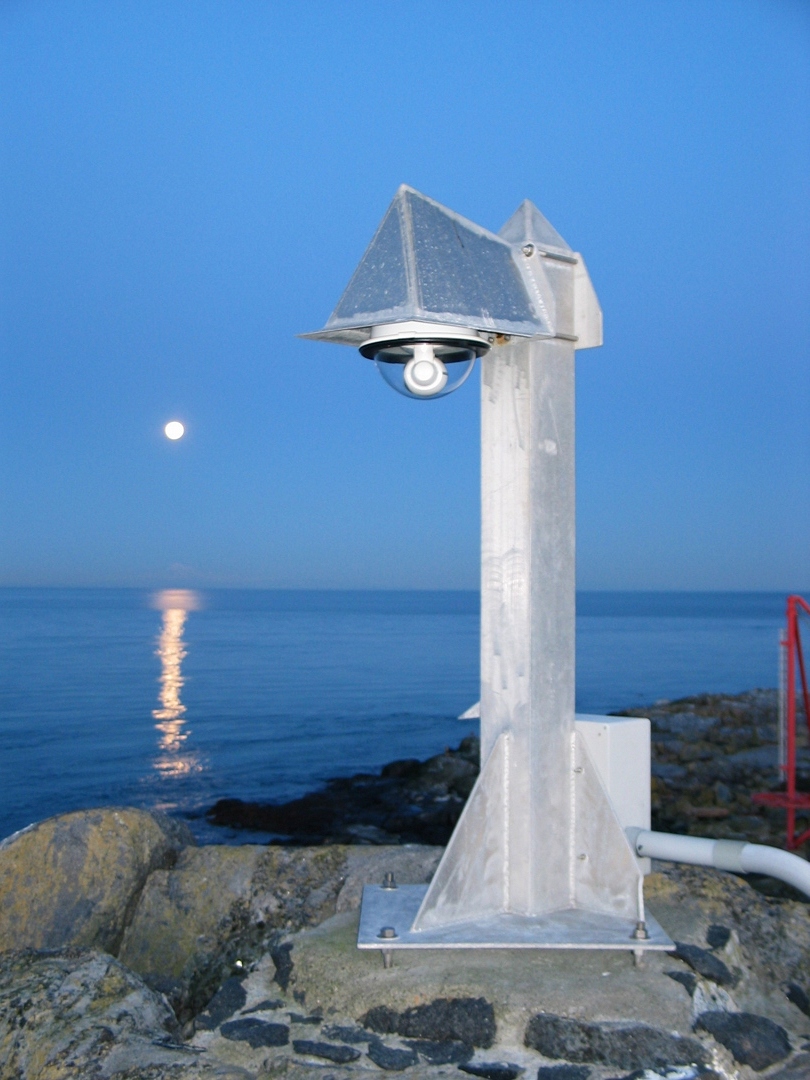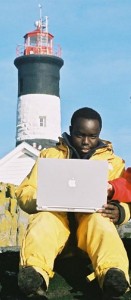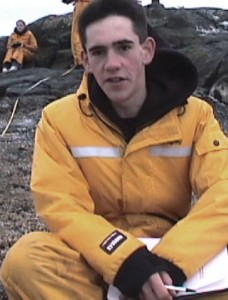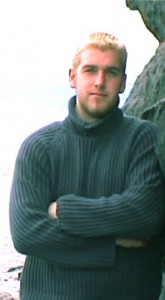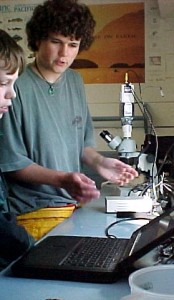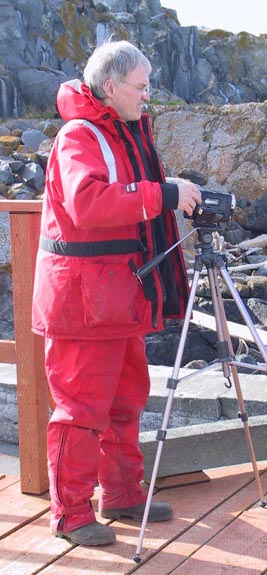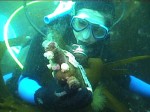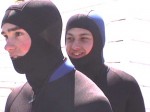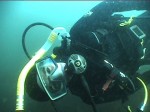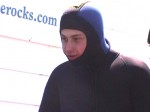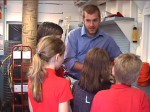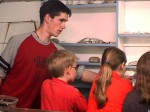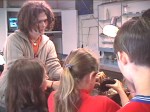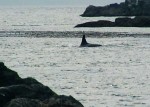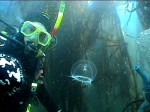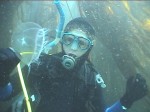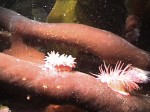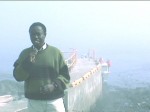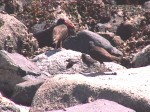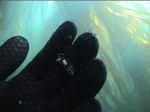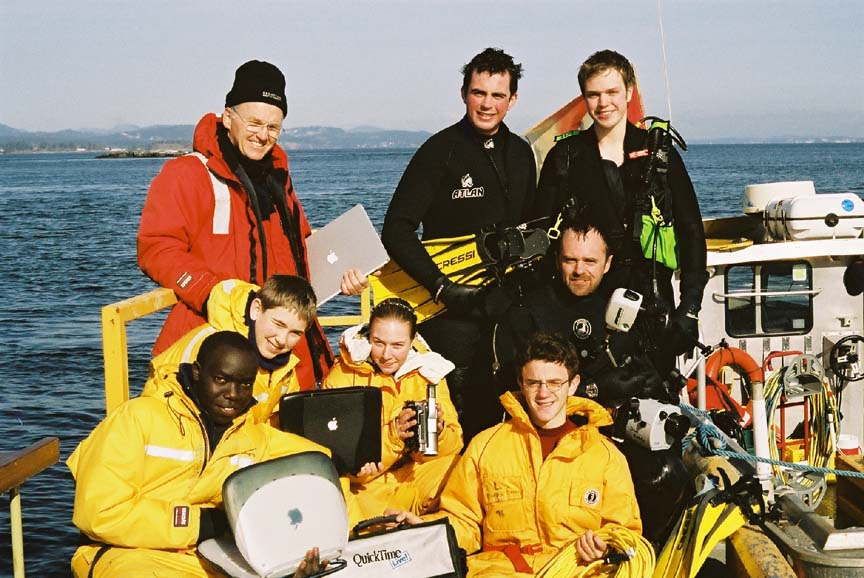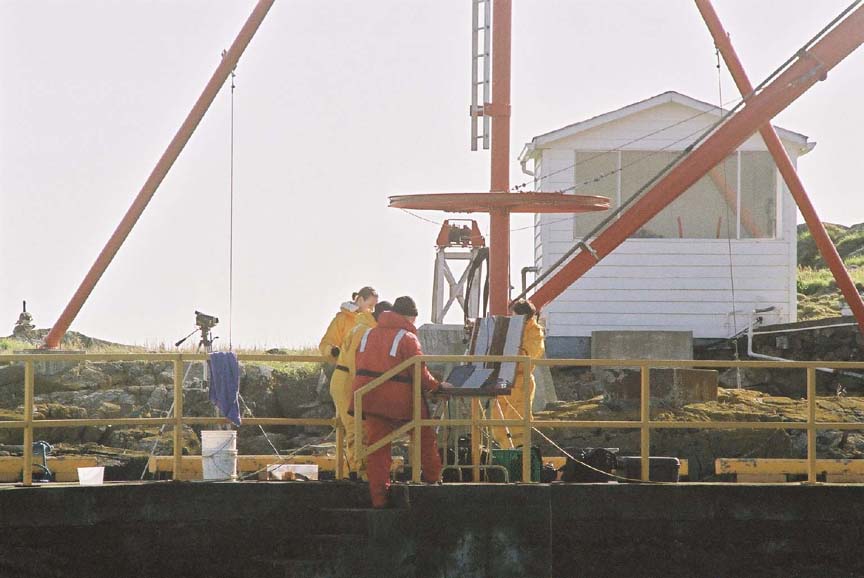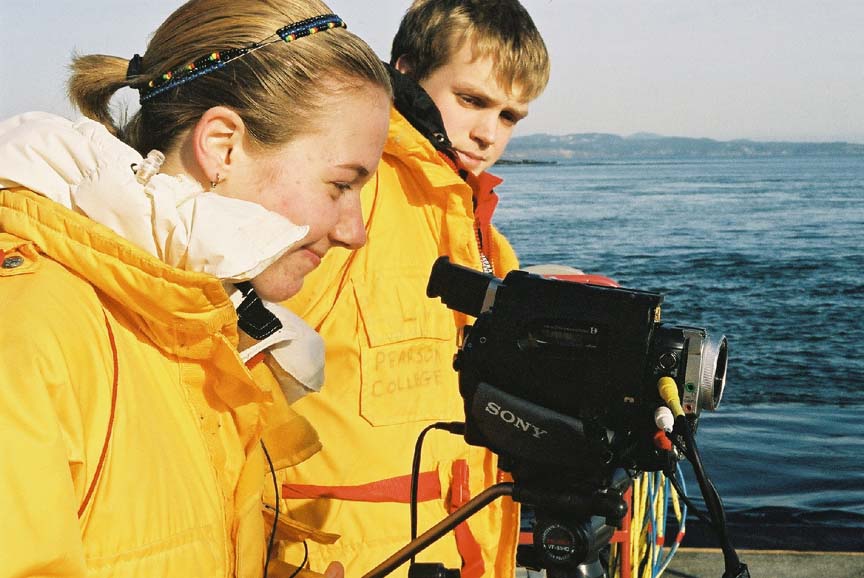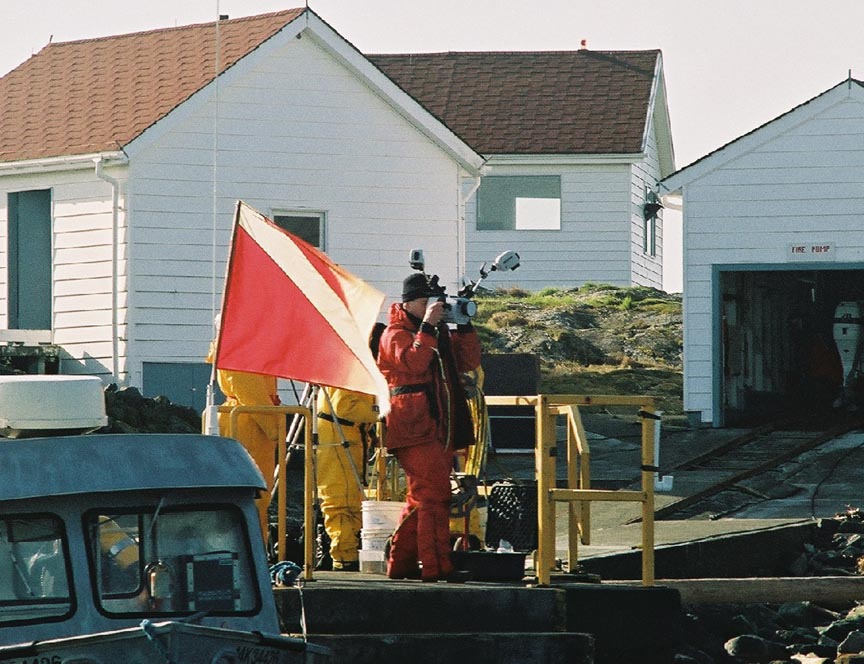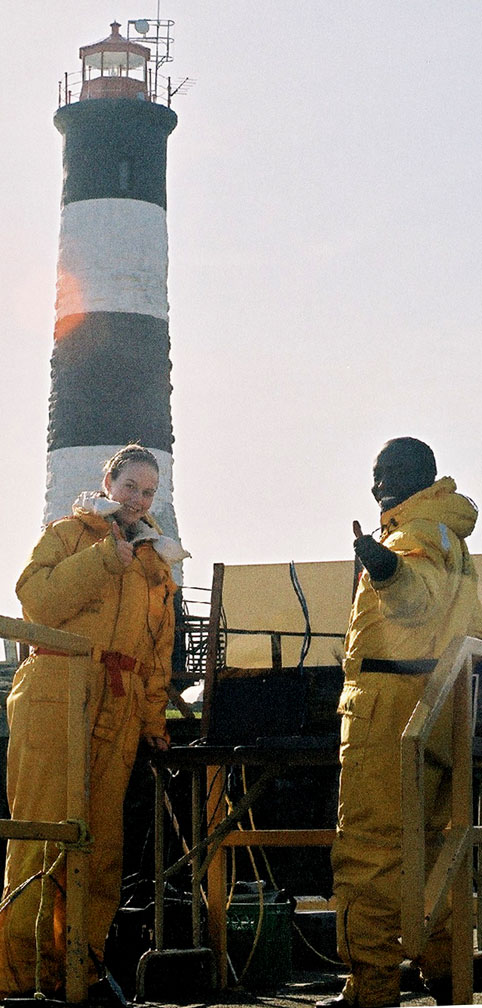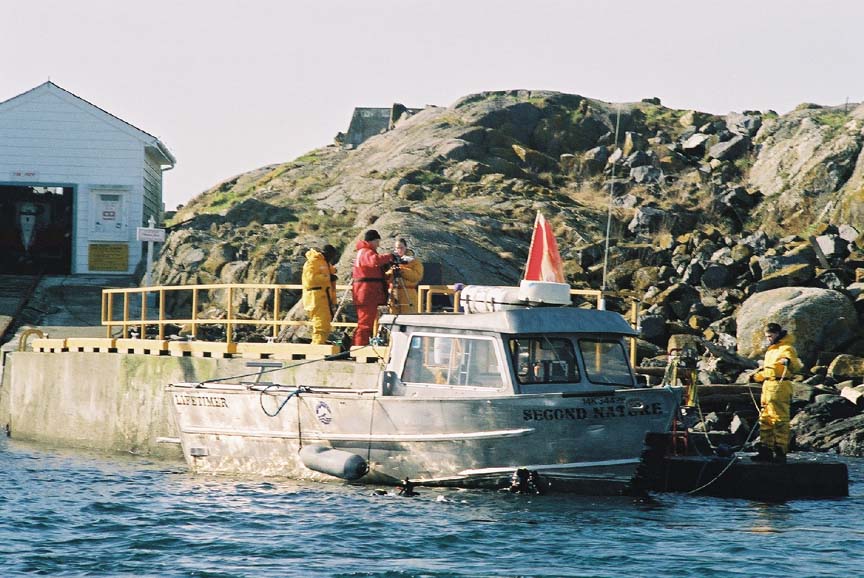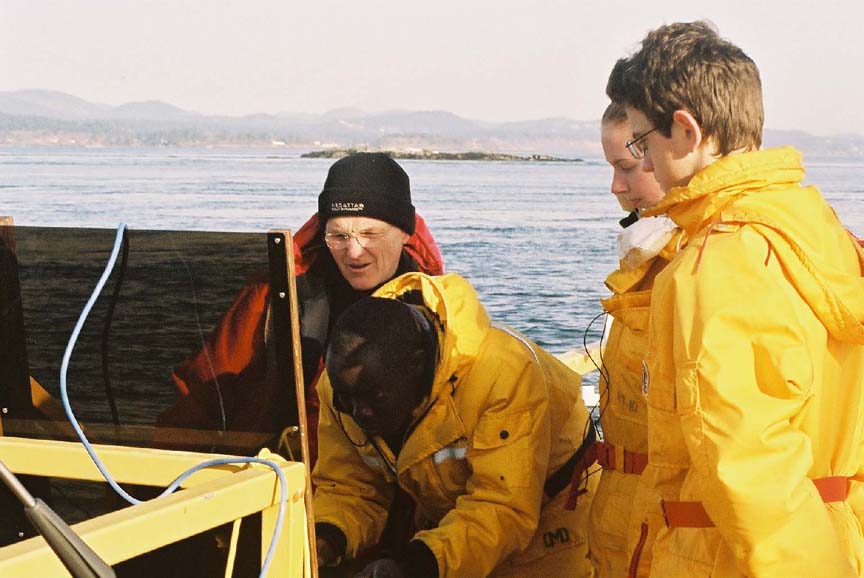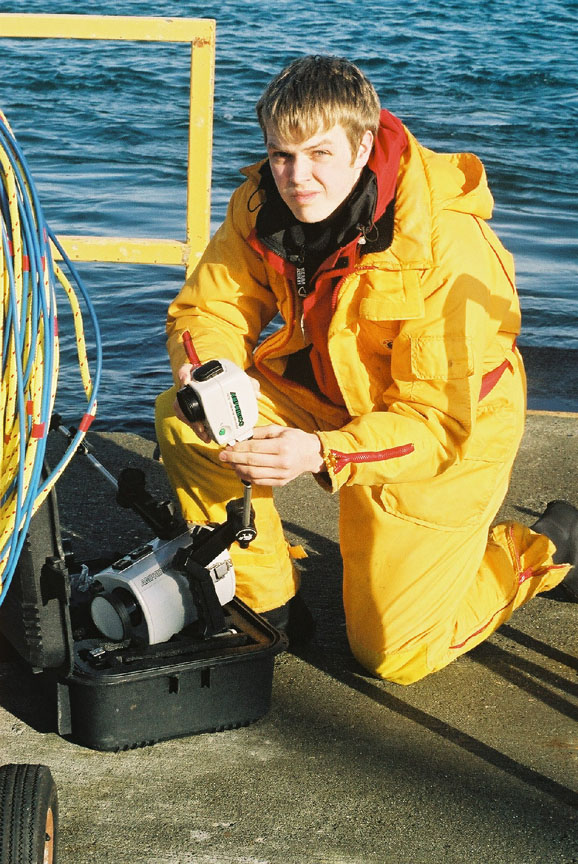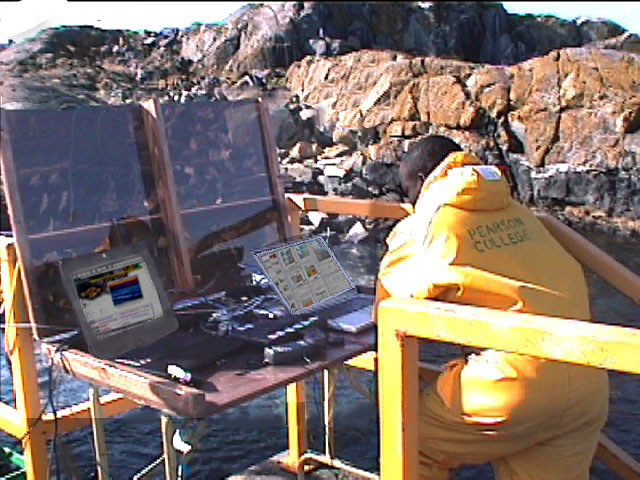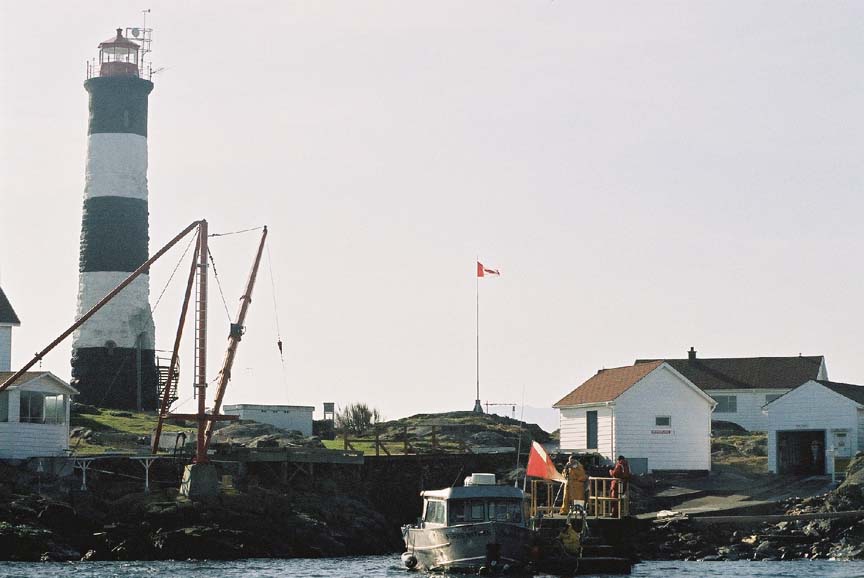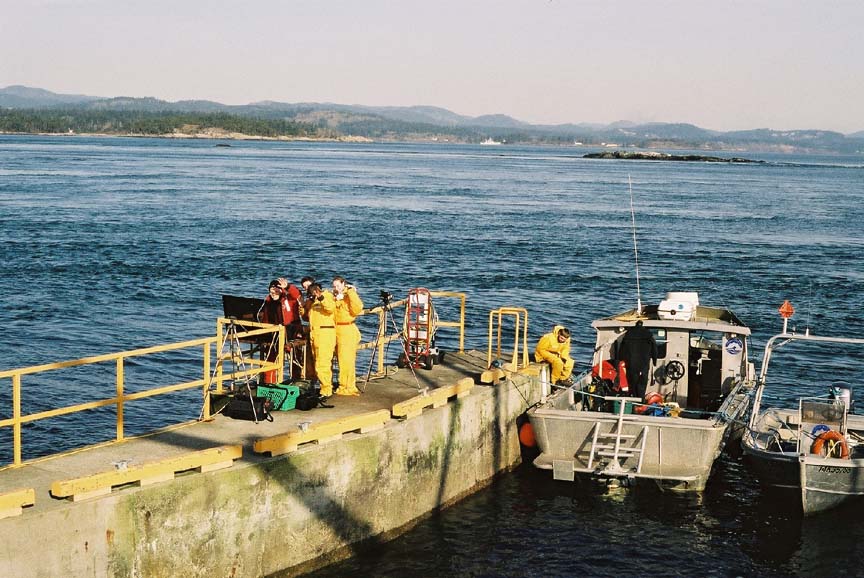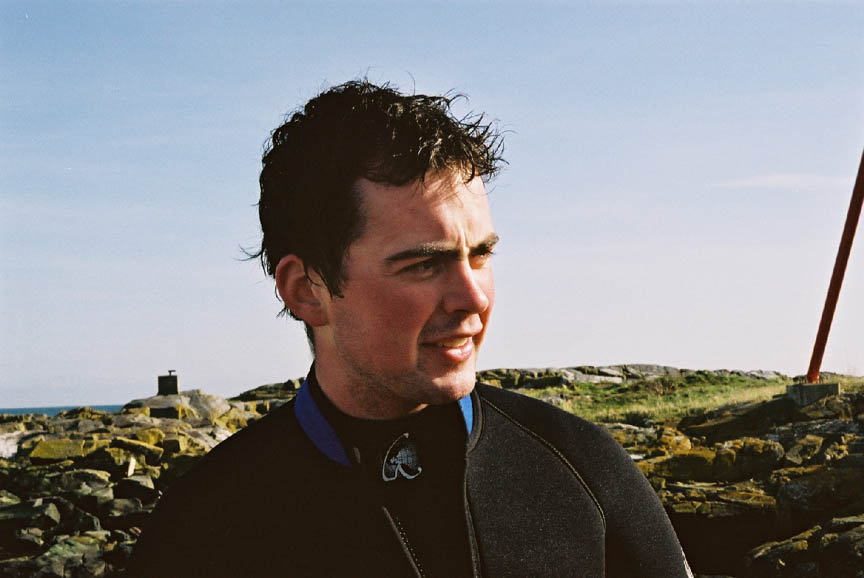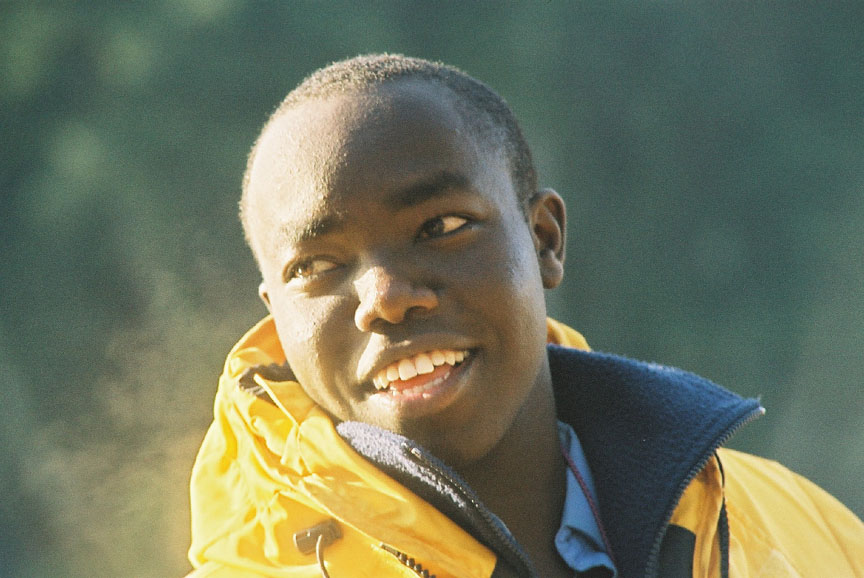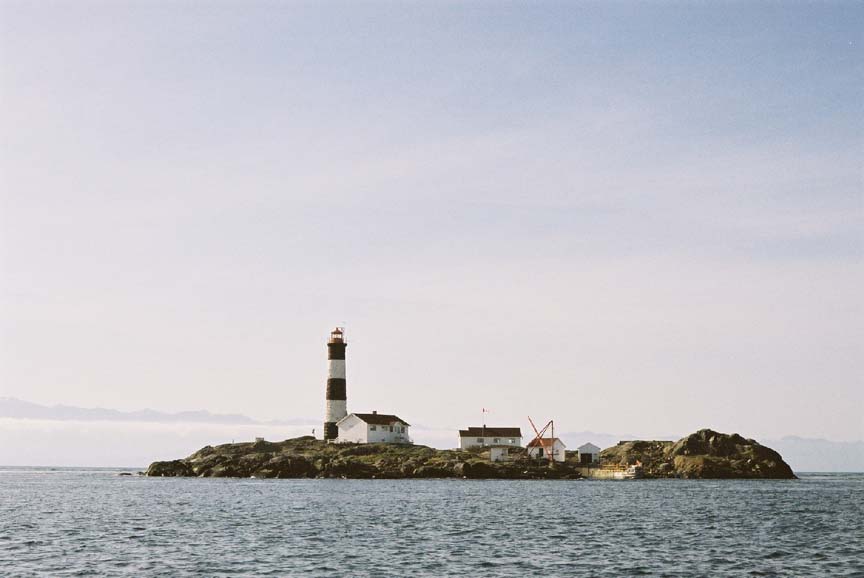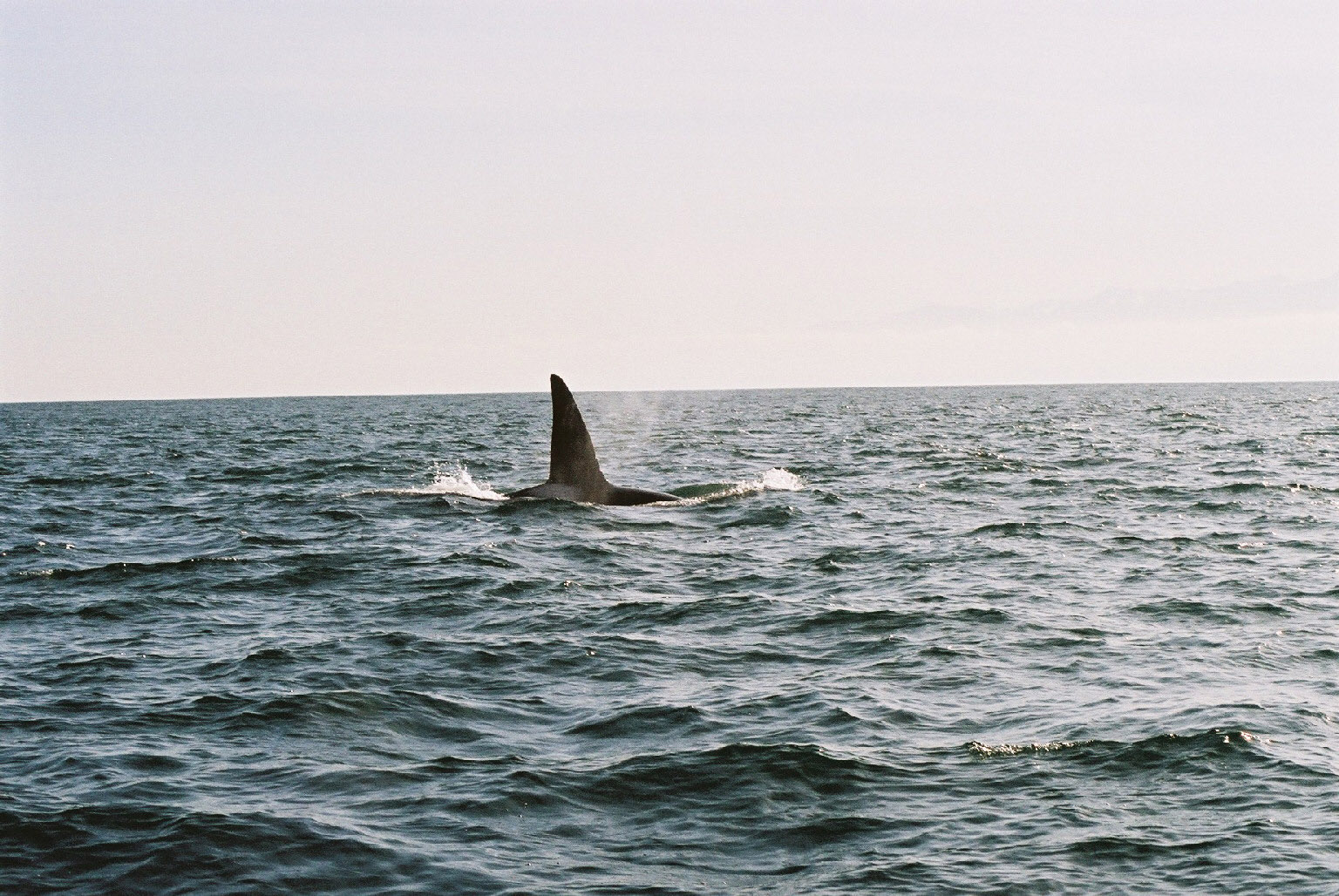This remote controlled camera gives a full 340 degrees view of the land and surrounding waters of Great Race Rocks. The panoramic view with zoom capabilities can be controlled by the viewer.
- The horizon of Great Race Rocks Island took on a new appearance..
- .. with the installation of the new robotic camera in March 2004.
- It sits on the highest point by the helicopter pad
- Mike Slater, the resident Marine Protected Area Guardian, poured the concrete for the base in a depression lined with plastic.
- Mike did a great job of anchoring the assembly. Here he drills holes for the attachments.
- .which would support the bracket which held the robotic camera
- .which is now attached up under a protective aluminum hood.
- The camera rotates, pans and zooms within a clear plexiglass housing
- At the base is the electrical transformer and the connection to the island’s ethernet .
- The students of the racerocks.com activity do a webcast on a windy day.
- ..from the top of the camera 5 viewpoint.
- Senate, Paul, Sonam and Emmanuel. doing a portable webcast.
- The view of the tower taken at dusk on the video 5 page..
- Roberto and Garry give an introductory webcast demonstrating the camera..
- The remote camera with a moonrise. Be sure to check it out at night as well.
Photos for this page by G.Fletcher
Be sure to use the manual focus when needed, and we apologize if occasionally the housing is covered with salt spray making viewing difficult, as it is not easy to keep it clean in this exposed location.
The original cam 5 was a SONY camera provided by Apple. This was replaced in 2010 with a canon VBC60, available from Nuspectra.
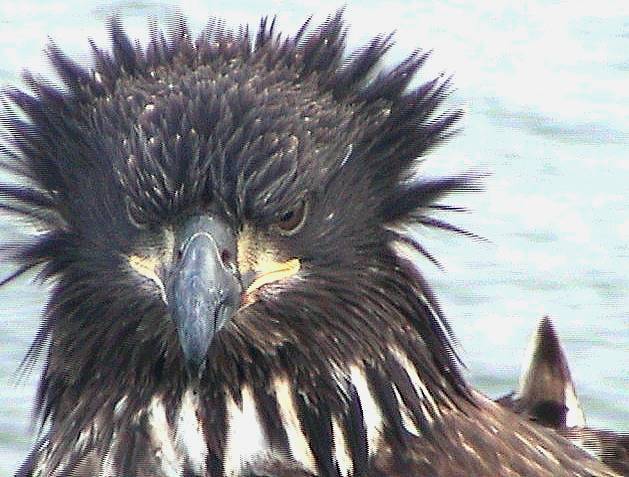 We have had collaboration from viewers in capturing pictures from this camera. See this example.
We have had collaboration from viewers in capturing pictures from this camera. See this example.

